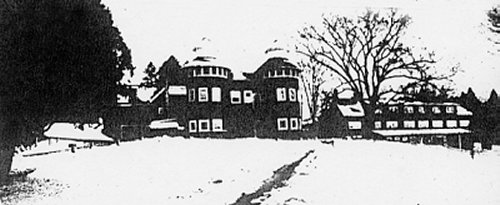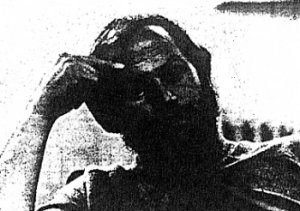GODDARD COLLEGE CHANGES TO SURVIVE
PLAINFIELD - In December, when Goddard College ended it's 47th year with
an operating surplus of $28,000 -- its first in 11 years -- administrators
marked the end of perhaps the darkest chapter in the Institution's history.
Four years ago, Goddard College, one of the nation's pioneers of progressive
education, was $3.5 million In debt and stood on the verge of financial ruin.
Today, several years after a grueling retrenchment, college officials say
the school has made good on hopes for a new beginning.
"We have come a long way," said Gary Welke, Goddard College business manager.
"We have an academic program and physical facility that is both manageable from
a fiscal perspective and viable from an educational perspective."
This spring, 80 new students have enrolled for courses, pushing student numbers
over the 250 mark, he said. Several part-time faculty members have been hired.
"The bottom line is we recruited the students," Welke said proudly. "Now we
are looking to next fall."
Still, Goddard's commitment to higher education tailored to a student's
individual needs and nurtured in a community of students and teachers has remained
intact, faculty members say, although student numbers are a fraction of enrollment
a decade ago.
During the 1960s and early 1970s, when Goddard's ranks swelled to nearly
1,900 students, the school was known as a breeding ground for radical thinkers.
"We had a reputation of being far out in a lot of ways," said Wallace Roberts,
Goddard College spokesman. "There was a big social ecology program, a lot
of students in theatre and the arts, a large political contingent ...
"The difference now is not so much a basic shift from those areas, but we
are much smaller in size. In the early 1970s, we had as many as 1,900 students
in eight separate programs."
Lois Harris, former dean of the resident undergraduate program and now professor
of music, said, "Goddard is really different now." But the college's newest vision
of higher education is more cohesive than in the school's heyday, she said.
"When we were reorganizing the college, we were really convinced of the idea of
one college, not separateness among faculty and programs," she said. "We were
hoping to have a more traditional college-age program and an adult program and
intergrate the two together."
As a result, Goddard instituted its "nine-day meeting," at which all students
share their study planning goals for the semester, she said. "For resident
students, we also developed a weekly meeting with their advisor ... where
we question and challenge the student."
Eric Zencey, professor of social studies, said, "The idea is to start with
a student's curiosity and unfold it where ever it goes, but it's not an
untutored curiosity."
To professors like Zencey and Harris, Goddard's changing fiscal fortunes,
recruitment of new students and changed curriculum are nothing short of spectacular.
Four years ago, even the most optimistic faculty and staff had doubts whether
steps could be taken to save the faltering Institution.
By the fall of 1980, a decade of declining enrollments had taken its toll.
Goddard's eight degree programs, each with Its own faculty and administration
were out of funds.
That October, Goddard's president resigned, recommending the college be
closed. As debts mounted and creditors called, Goddard was threatened with
the loss of accreditation.
Students and faculty -- who turned paychecks back to the school -- simply didn't
know if the school would stay afloat one week to the next.
"The discussions that fall were what would be the most graceful and honourable
way to close the college," Harris said. "After the president resigned, the
thought became how could we keep the college open."
Then, in May of 1981, Goddard acted. Under its new president, Jack Lindquist,
it staged a grueling retrenchment. It shed cherished degree programs, transferring
four of them to Norwich University. It trimmed its faculty by two-thirds, sold
real estate holdings.
To many, one of the freest spirits in higher education had met its fate. To those
working to reorganize the school, however, the goal was to preserve Goddard's
educational goals and start anew.
"The place now has a sense of stability about it," Zencey said.
"Starting over enabled us to put together a new version of the college,"
said Harris. "It wasn't picking up the pieces."


Goddard College in Plainfield, above, has come back from the brink of
collapse by selling off land and transfering programs to other colleges.
President Jack Lindquist, left, who helped restructure Goddard, once said
'We are reaffirming Goddard's mission, Goddard's philosophy, Goddard's smallness.'

